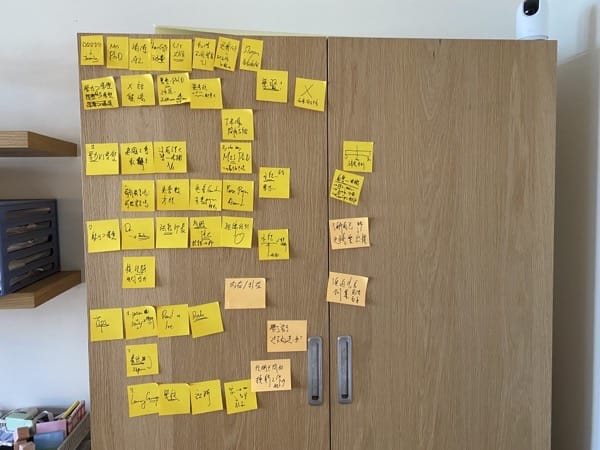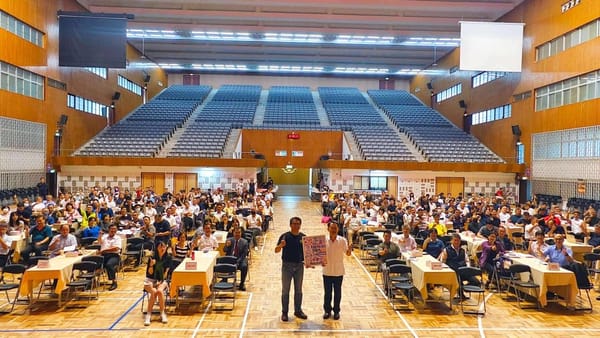From Practice to Theory and Back Again: A Profile of Key Research on Gamification in Corporate Training
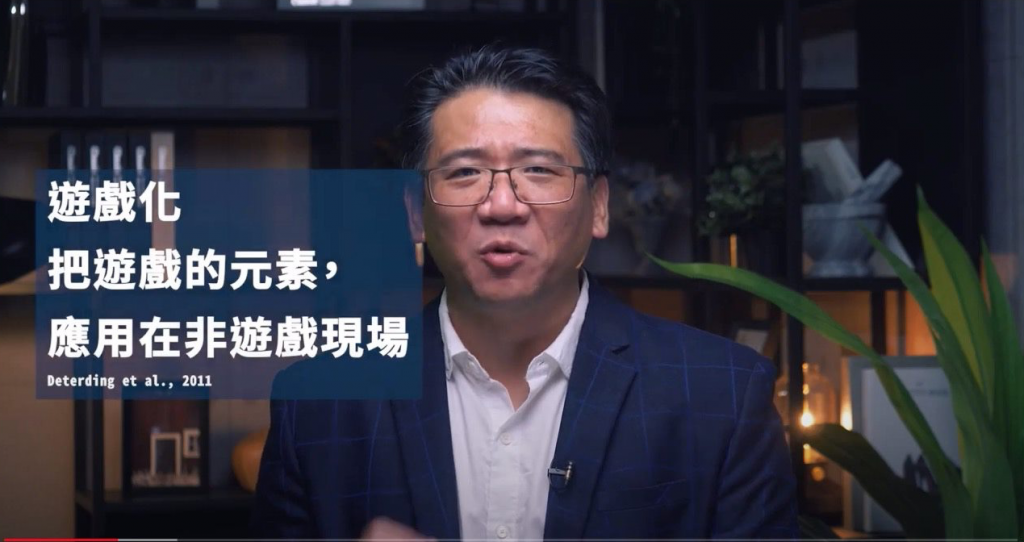
From Practice to Theory and Back Again: A Profile of Key Research on Gamification in Corporate Training
2021.10.22
Between May and September this year, I delivered numerous talks on "Techniques for Teaching Online Courses." During the Q&A sessions, one teacher asked: "How were you able to quickly identify the key elements and develop effective online teaching techniques? Especially in integrating gamification methods that make the entire course engaging and fun—how did you come up with that?"
After listening, I replied: "Besides my familiarity with teaching techniques, I conducted practice-oriented research that identified the key elements of successful gamified teaching!"
Indeed, my recently accepted SCI journal article, "The Key Elements of Gamification in Corporate Training – The Delphi Method" (link to mandarin version in the journal: The Key Elements of Gamification in Corporate Training – The Delphi Method), involved substantive interviews with 14 master teachers in corporate training. Through the Delphi method—a research approach based on expert cross-evaluation—we identified the critical success factors for gamified teaching.
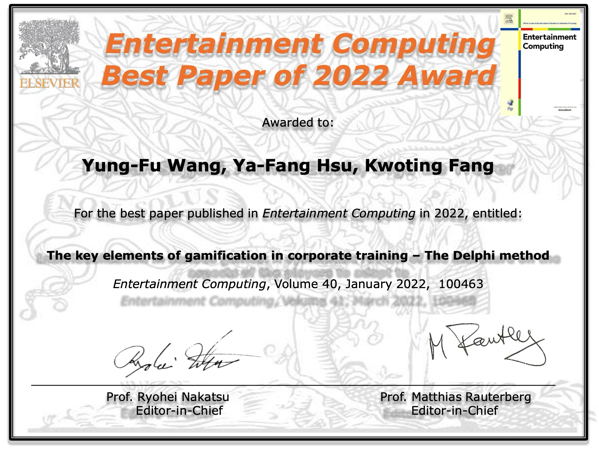
Update: This paper received the journal's annual best paper award (one per year) and ranks as the most downloaded article of the year.
Update 2: Another paper on medical education gamification, "Gamification in medical education: identifying and prioritizing key elements through Delphi method" (Wang, Hsu, Fang, & Kuo, 2024), was published in the Q1 journal - Medical Education Online.
Completing this research allowed me to immediately identify critical elements when designing courses. I considered how to maintain team-based group competition online (grouping, scoring, leaderboards, prizes), how to provide immediate feedback (using paper scoring systems and verbal encouragement), and how to gradually increase challenge difficulty (transitioning between different teaching methods and pacing). Most importantly, I consistently connected course objectives with the gamification process, ensuring participants not only had fun but also learned various teaching techniques throughout the experience.
This academic journal article on "gamification in corporate training" took nearly two years of back-and-forth revisions (with moments where I nearly gave up) before finally being accepted by the SCI journal Entertainment Computing! While the journal isn't among the top 25% elite publications (it ranks in the Q2 quartile for its field), I had simply hoped for a quick review process... little did I know it would take almost two years! When it was approved in early October, I wanted to shout with joy!
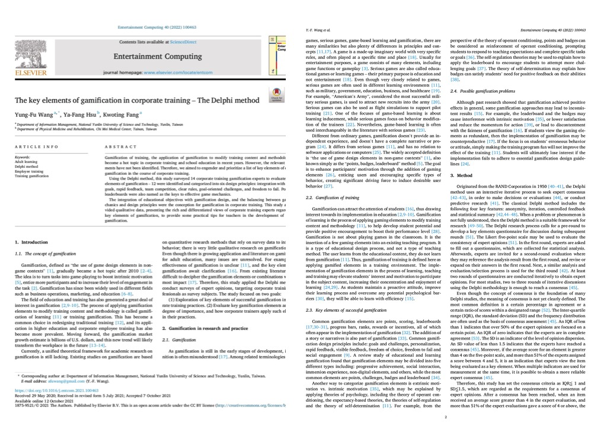
Why Research "Gamification in Teaching"
For over a decade, we've applied numerous gamification elements in corporate training, such as point scoring, reward mechanisms, and team leaderboards to enliven the learning experience. I've written extensively about gamification techniques, including articles in 2018 on how gamification sparks motivation, applying PBL elements (points, badges, leaderboards) in live gamification, and team dynamics with grouping techniques. In 2020, I even created an episode specifically about gamified teaching for my "Techniques of Teaching Online Course" series, which is available online (did you watch it?).
Still, I remained curious: Beyond my own implementation, how do other instructors utilize these gamified teaching methods? How do different corporate trainers design gamification elements across various training programs? Which elements are most crucial? Which can be temporarily set aside?
These questions launched my two-year journey of research and publication.
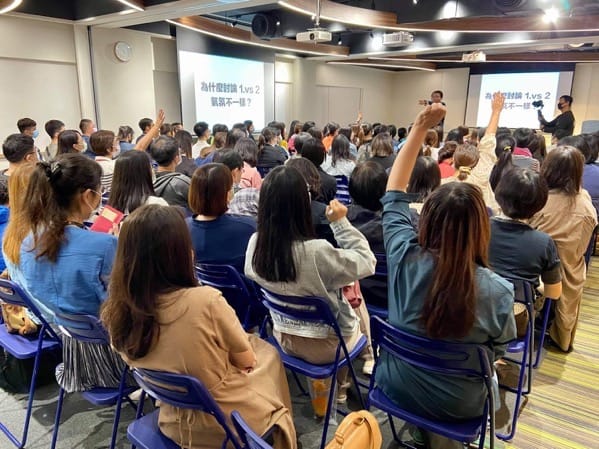
Recruiting Gamification Experts
Since I wanted to understand how corporate training experts approach gamification, I employed the "Delphi method." This research methodology begins with expert interviews to understand how specialists implement gamification and to identify operational elements. The experts then participate in multiple rounds of evaluation, first rating the importance of each factor individually, after which I compile everyone's rankings for them to review. Experts then reconsider their opinions in light of the group consensus. After several iterations, we establish overall expert agreement on key elements. Finally, follow-up interviews allow experts to offer additional insights. This approach—the Delphi method—has previously been used for war strategy assessment, long-term trend evaluation, and medical treatment assessment. I particularly appreciate how it balances qualitative (interview insights) and quantitative (indicator assessment) methods, considering both individual expert judgment and collective opinion. (This is the simplified explanation; those interested can read the academic version later.)
The critical component of this method is the expert panel!
Valuable consensus requires outstanding experts, which leads to outstanding results! The challenge with this research method has always been that domain experts are extremely busy and difficult to schedule. Imagine a typical researcher writing to industry leaders, asking them to participate in a study involving multiple rounds of interviews, questionnaires, and revisions... how likely would these experts be to accept?
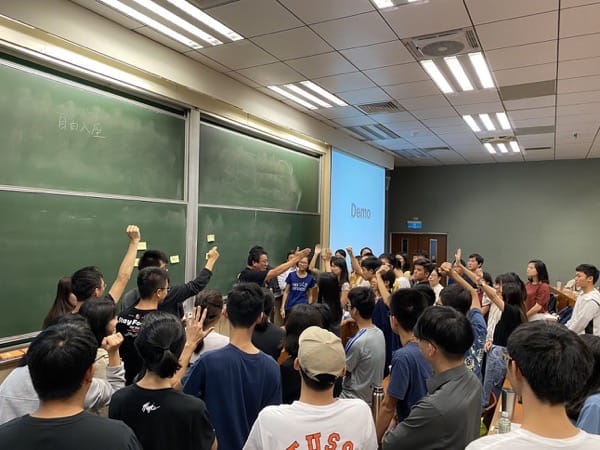
Top Corporate Training Gamification Experts
Fortunately, I've maintained good relationships with many corporate training gamification experts. My close colleagues like Adam, MJ, and Sean were naturally included, and I also sought recommendations from instructor friends, management consultants, and HR professionals. Ultimately, I invited the following teachers (computer-sorted by stroke order of Chinese names): Yu Wei-Chang (于為暢), Ho Chia-Hsun (何佳勳), Chou Shuo-Lun (周碩倫), Lin Ming-Chang (林明樟), Lin Chang-Yang (林長揚), Yao Shih-Hao (姚詩豪), Sun Chih-Hua (孫治華), Chang Li-Jen (張力仁), Chang Kuo-Yang (張國洋), Chuang Shu-Han (莊舒涵), Hsu Jung-Hung (許榮宏), Yu Hao-Yun (游皓雲), Chao Yin-Cheng (趙胤丞), Liu Tsang-Shuo (劉滄碩), Tsai Hsiang-Ling (蔡湘鈴), and Hsieh Wen-Hsien (謝文憲).
Every one of these teachers is a domain expert with incredibly busy schedules. Yet when they heard about my research on teaching gamification, each gladly offered assistance, participating in multiple rounds of questionnaires and interviews, sharing their corporate education gamification know-how with remarkable generosity and openness. They have my deepest respect and gratitude!
Key Success Factors in Gamified Teaching
For details of the research methodology and gamification literature references, please refer to the academic paper. The original submission was in English (thanks to my wife JJ for recommending top-tier English translation and editing consultant Jen, Email: jenviowang@yahoo.com). To make this practice-based, classroom-relevant research more accessible, I purchased the Gold Open Access license ($2,500!) and created a public Chinese version so that those of us teaching in Taiwan could more easily understand and apply these key factors for successful teaching gamification. These include six core principles and two essential elements of gamification.
Six Core Principles of Gamified Teaching, with Expert Insights:
1. Integration with Learning Objectives: Experts emphasized that "games are means, not ends" and "must relate to the teaching subject—never gamify for its own sake."
2. Immediate Feedback: Experts advised that "on-the-spot immediate feedback is crucial" and "every response should earn points, reinforcing students' familiarity with and acceptance of the scoring system."
3. Team Competition: Expert experience showed that "competitions boost student participation and focus, especially team competitions" and "positive competition creates a virtuous, self-sustaining cycle of team dynamics."
4. Clear and Fair Game Rules: Experts believed in "instantly understandable game rules" and noted that "when game fairness is compromised, participants easily... abandon participation."
5. Gradually Increasing Challenge Difficulty: Experts' approach was to "challenge students to find solutions within time limits" and ensure "gamification has levels, progressing from simple to complex..." while "effectively managing time through course design, difficulty adjustment, and rule explanations."
6. Risk-Free Experiential Activities: Experts stated that "students experience the journey from non-cooperation to cooperation through games" and "allowing students to experiment freely in relatively safe environments is critical... so they don't feel embarrassed when answering incorrectly."
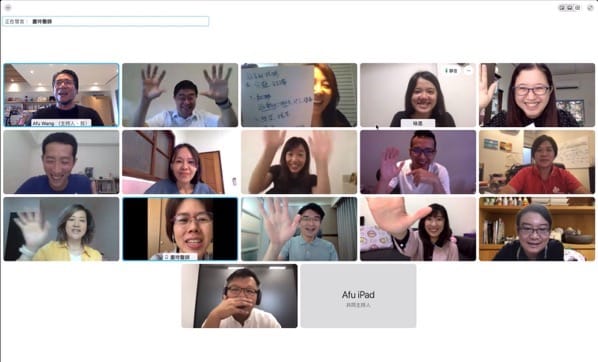
Beyond these six design principles, two key gamification elements are crucial:
1. Point Scoring: When learners meet expected performance—answering questions, participating in discussions, or solving challenging problems—they earn varying point values, encouraging not just correctness but participation.
2. Leaderboards: Leaderboard mechanisms display team scores, allowing learners to see their standing relative to peers, stimulating motivation and greater effort.
Conclusion
These principles synthesize multiple academic studies and expert practices, evaluated through multiple rounds of peer assessment. To faithfully represent the experts' intentions, we conducted several interviews and excerpted their original statements. The detailed evaluation process and data are available in the full paper. Both English and Chinese translations have been completed, with gamification references listed in APA format at the end of the article. I welcome anyone interested in gamification and gamified teaching to explore other gamification research for additional creative ideas.
I hope this research on "Key Elements of Gamified Teaching" truly bridges practice and academia, benefiting future gamified teaching environments (helping educators design more engaging courses that improve student attention and learning outcomes) while assisting future academic researchers in further exploring gamification, teaching gamification, training gamification, gamified learning, gamification in education, and even the Delphi method to develop more practical research. This approach maximizes the impact of time invested in research!
Acknowledgments:
Note 1: Thanks to Professor Fang Kuo-Ting for his guidance. We discussed consensus and research details many times! I'm grateful for Professor Fang's time despite his extremely busy schedule.
Note 2: Thank you to co-author Hsu Ya-Fang. Without your data organization, I—struggling with documentation—could never have managed the citation and reference formatting requirements!
Note 3: Thanks to ultra-professional English translation and editing consultant Jen. Your professionally crafted, elegant phrasing perfectly conveyed my intended meaning, even enhancing it! I highly recommend this artisan-level English consultant. (Dr. Jeff's quality recommendation, contact Email: jenviowang@yahoo.com. Thanks also to my wife JJ for the referral.)
Note 4: Thank you to my wife JJ and our children for their support. Writing papers beyond my already busy work schedule often created tremendous pressure and affected my mood. Thank you to my wife for tolerating my temperament and to our children for their sweet companionship.
Note 5: Thanks to myself for not giving up! There were moments when I couldn't see the end, when my spirits were incredibly low... but I gritted my teeth, focusing not on quitting but on solutions, quickly developing Plan B and even Plan C research approaches. Finally, the wait paid off! I'm thrilled!

